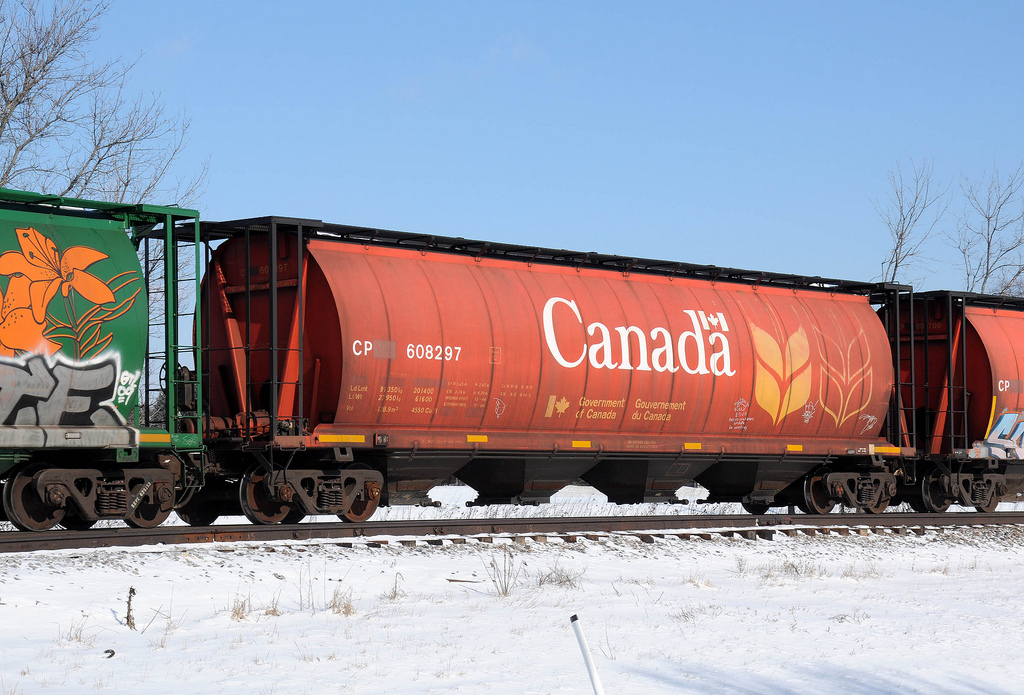The Transportation Modernization Act will promote transparency and balance the competing needs of shippers and railroads, Transport Minister Marc Garneau said in announcing the legislation.
The government will retain rate caps for grain shipments, despite a study last year recommending that they be phased out over seven years. The cap, called the Maximum Revenue Entitlement, dates to 2000.
The new legislation also would encourage investment in new covered hoppers to upgrade Canada’s aging grain fleet.
“CN welcomes the decision of the federal government to change the framework of the Maximum Revenue Entitlement to remove some of the disincentives which have discouraged the acquisition of grain hopper cars,” Canadian National CEO Luc Jobin says.
The legislation includes data reporting requirements for railways on rates, service, and performance. It also aims to define “adequate and suitable” rail service and gives shippers the ability to seek financial penalties in service agreements with railroads.
Regulators also propose expanding interswitching rules. Long-haul interswitching — a Canadian term roughly equivalent to competitive or forced switching — would provide captive shippers across Canada with access to a competing railroad.
Under current rules, shippers can seek access to another carrier if they are located within 30 kilometers of an interchange point. That distance rises to 160 kilometers for grain shippers in Manitoba, Saskatchewan, or Alberta.
The proposed regulation would extend the distance to up to 1,200 kilometers for captive shippers under certain circumstances, Reuters reported.
About 5 percent of Canadian rail traffic is covered under the current system, according to a 2014 report.
CN raised concerns that the interswitching proposal would put Canadian railways at a competitive disadvantage by opening some markets to U.S. railroads.
“Our initial view is that long haul interswitching may have unintended consequences with respect to investment and could give U.S. railways access to the Canadian market at regulated rates — without reciprocity,” Jobin says.
CP said it was studying the proposed changes.
Canada has had an interswitching system in place for more than a century. Under interswitching, one railroad handles either the pick-up or delivery of cars from a shipper and interchanges with another railway for the long-haul move.
The system has helped restrain rate increases for certain captive shippers, rail executives have said.
The regulatory changes also would lift the current limit on ownership of CN stock. Currently, a single shareholder may own no more than 15 percent of the company. The proposed changes would boost that to 25 percent. The limit was set as part of CN’s transition from a crown corporation to a publicly owned company in 1995.
Microsoft founder Bill Gates is CN’s largest shareholder. His Cascade Investment company has an 11.8-percent stake, while the Bill and Melinda Gates Foundation has a 2.2-percent stake.














FYI In years gone by the interswitch limit was 4 track miles to an interchange. There were many interchanges all over. Example in Toronto there were 6 interchanges. In addition there were a small number of private sidings that were served by both RR’s.
Now it is a 30 KM radius, NOT track miles.
Thanks for changing the photo!
Photo is of a potash train – not grain.
I have seen this story on regular media and now here, but as yet, no one has explained exactly what part of this new act encourages increased investment in covered hopper cars?